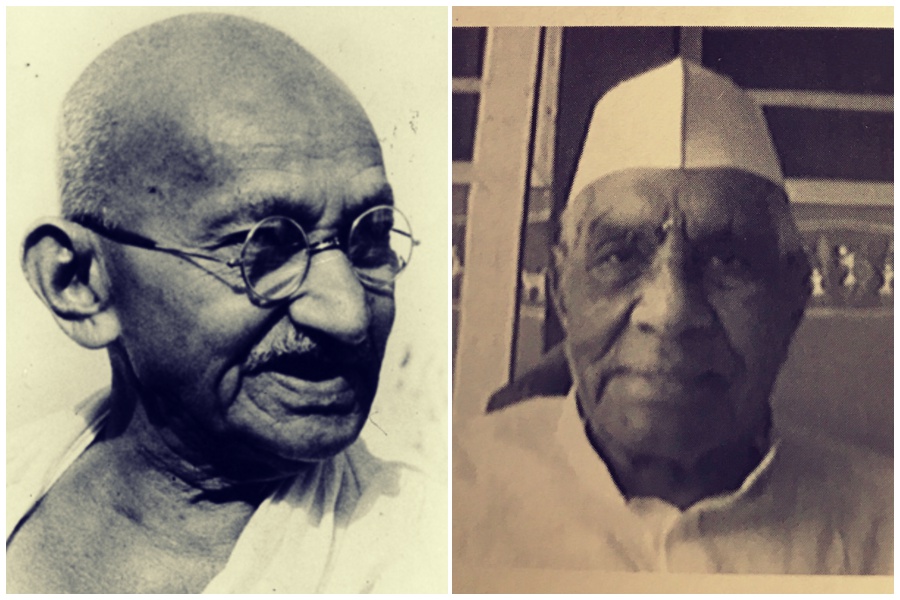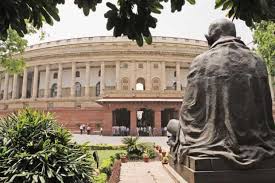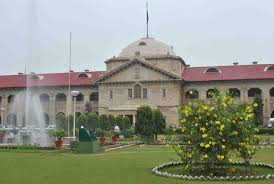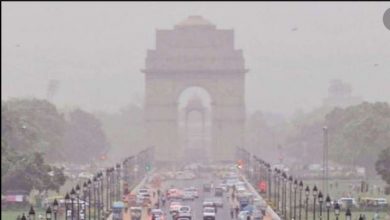Attempts to Murder Gandhi and The Man Who Saved Bapu From One
Bhillare Guruji was a Gram Sevak and a rural banker and a staunch Gandhian all his life.
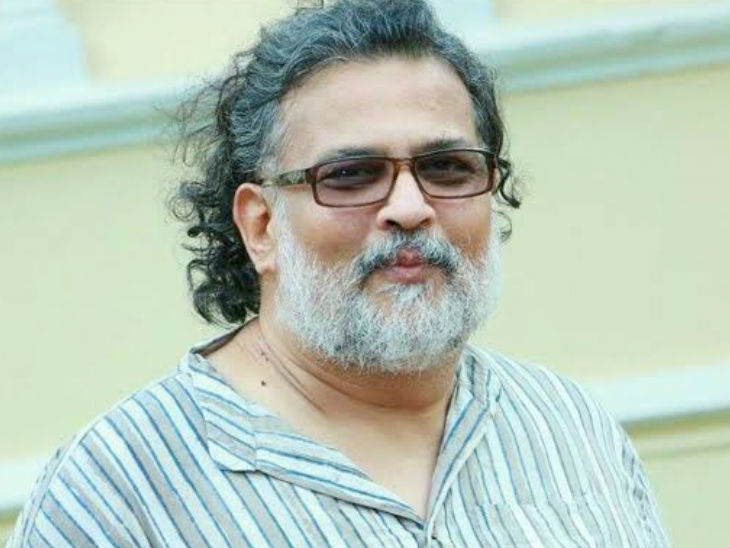
tushar@mahatma.org.in
Attempts to murder Gandhi and The Man Who Saved Bapu From One . A few years ago Bhillare Guruji passed away. Bhiku Daaji Bhillare was respectfully called Bhillare Guruji, a wrestler from Satara. He was a Gandhian, a freedom fighter and a Congress stalwart. He was also my hero because he had once saved Bapu’s life. After independence, Bhillare Guruji became an active Congressman and was elected multiple times to the Maharashtra Assembly. He was a Gram Sevak and a rural banker and a staunch Gandhian all his life.
I first read his story while researching for my book ‘Let’s Kill Gandhi!’. His heroic action was mentioned by Bapu’s secretary and biographer Pyrelal Nayyar in his multi volume biography ‘Mahatma’ and by the late Jagan Phadnis in his ‘Mahatmyachi Akher’. Then, just before my book was published in 2007, I heard the story proverbially from the horse’s mouth when I met Bhillare Guruji at a function in Sangli. I invited him to grace my book release function. Even though in his autumn years, he still was a mighty oak. When he recounted the story of that day in ’44, he had the audience spell bound, the Pehelvaan floored the audience that evening.
Subsequently we met on several occasions, when Guruji was asked to narrate the same story. What struck me, was that Guruji always said that he had saved Bapu’s life on one occasion, the second known instance, suggesting that there were more.
After Bapu’s murder, many myths and untruths have systematically been spread to justify Bapu’s murder. His murderer has become a hero for many. They worship him as well as the gun he used. Move is afoot to build memorials and temples to Bapu’s murderer. A murderer is being portrayed as the saviour of Hinduism, Hindu Rashtra. The process to bestow sainthood on Nathuram Godse is in progress. A murderer is being turned into a God.
Much needs to be said about the truth behind Bapu’s murder, murderers and the larger conspiracy a foot to subvert the fledging nation, the King Pin who was let off, about the organisation which conveniently washed Bapu’s blood off their hands and disowned the murderer who was one of their own.
The first known attempt on Bapu’s life happened in Champaran, during the Champaran Satyagraha. The Indigo Zamindars and Indigo dye manufacturers were angry with Bapu. Irwine, a particularly vicious manager of the Indigo Factory at Motihari schemed to do away with Bapu. He invited Bapu to dinner at his home, after declining several invitation, when Irwine persisted, Bapu agreed to visit but declined to have food. Irwine insisted, finally Bapu agreed to have a glass of milk. Irwine ordered his Khansama Butak Miya Ansari to mix poison in the milk before serving it to Bapu. He threatened Butak Miya with dire consequences if he did not obey. Bapu came to Irwin’s home accompanied by Babu Rajendra Prasad. Butak Miya did not wish to be an accomplice in the murder of Bapu. He whispered a warning to Bapu to not drink the milk and while serving him he accidentally knocked the glass out of Bapu’s hand and spilled all the milk. A cat lapped up the poisoned milk and soon died. Thats when everyone realised that the milk was poisoned. Bapu refused to press charges. Butak Miya was dismissed for disobeying his boss and his home and property were confiscated as punishment for disobeying orders. He and his family were reduced to penury. After independence Rajendrababu became President of India, on an official visit to Bihar he saw Butak Miya and recollected the episode. This has been written about in the book ‘Champaran Ke Satyagraha Ka Itihaas’. This was the only known attempt on Bapu’s life on the orders of a Englishman. It is said that PM Churchill had several times reprimanded the British Military Intelligence Service for not ‘dealing’ with Gandhi.
But let me start by talking about all the attempts on Bapu’s life, that failed, including one that Bhilare Guruji foiled. This is my tribute to the memory of the man who saved Bapu.
The First Attempt
Grenade Attack in Poona On 25th June 1934.
This happened when Bapu was travelling the length and breadth of the land convincing temples to throw open their doors to Dalits and to convince upper caste villagers to allow Dalits the use of community wells. There was a lot of resentment and anger amongst the upper caste Sanatani Hindus. Sanatanis were raving and ranting against what they called desecration. Threats were uttered, hate was spewed, their target was Bapu. Bapu wasn’t bothered.
While passing through Poona on the Harijan Yatra, members of Poona Municipality decided to honour him. A function was organised in the Municipal Hall. The following is an abridged eye witness account of the incident written by Shripad Joshi in his book, ‘Mahatma, My Bapu’, Chapter: ‘From the Jaws of Death’.
‘The Municipal Hall was chock full of people that evening, the crowds had spilled into the street outside. Our Boy Scout band was excitedly waiting to play the welcome tune for Bapu. We waited in the southern balcony on the first floor, overlooking street. I was the flute player of the band. Our Scout Master had ordered us to be ready to perform on his command, he was peering over the bannister at the street below. We heard a car pull up, someone said in a loud voice, “Gandhiji has arrived!!” our Master signalled us to start, we did. Just then there was a loud bang! We thought they were bursting crackers to welcome Bapu. But the sound was much too loud. A cloud of dust and smoke drifted past our balcony. There were a few shouts and moans. “Its a bomb!” we heard someone shout. Even before the sound of the explosion died down we heard another car drive up. Bapu had arrived in the second car. “Vajva re!” (“Begin Playing!”) our Master ordered. Bapu was rushed into the hall and the function continued. It was only after we finished playing the welcome tune and were packing up that a few policemen came up and asked us if we had seen anything suspicious or anybody lurking around suspiciously. None of us had. It was then we were told that a hand grenade had been tossed on the car from the terrace above. Fortunately Gandhiji wasn’t travelling in the car and the grenade bounced off the bonnet of the first car and rolled into the middle of the street before exploding. The car carrying Bapu and Ba arrived just as the grenade exploded, but they were shielded by the first car. A few people suffered injuries. A couple of policemen suffered deep gashes from shrapnel, but there were no grievous injuries. Bapu was safe!’
Speaking about the attack Bapu said, ‘I cannot believe, that any sane Sanatanist Hindu could ever encourage the insane act that was perpetrated this evening. However I would like the Sanatanist friends to control the language that is being used by the speakers and writers claiming to be speaking on their behalf. The sorrowful incident had undoubtedly advanced the Harijan cause. It is easy to see causes prosper by martyrdom of those who stand for them….. Let those who grudge me what remains to me of this earthly existence, know that it is the easiest thing to do away with my body….. What would the world have said, if the bomb had dropped on me and my party, which included my wife and three girls who are as dear to me as daughters and are entrusted to me by their parents? …I have nothing but deep pity for the unknown thrower of the bomb. If I had my way, and if the bomb-thrower was known, I should certainly ask for his discharge even as I did in South Africa, in the case of those who successfully assaulted me…..’
Bapu did not file a complaint, the police did not bother to investigate the matter further. The case was closed with the comment ‘Assault by unknown perpetrators’. In the mid forties there were hand grenade attacks on Taziya processions in Poona and in a Muslim owned cinema hall in Ahmadnagar. Weapons and explosives along with hand grenades were recovered from the house of the manager of the city Hindu Mahasabha chief Vishnu Karkare, a fanatic follower of V. D. Savarkar. Investigations later showed that the hand grenades recovered from Ahmednagar were of the same make and batch as the one used in the attack on Bapu in Poona. Karkare was convicted in the Gandhi Murder case and sentenced to life imprisonment. Karkare was a known Savarkarite and associate of Narayan Apte, who was convicted and executed in the Gandhi murder. The police suspected the involvement of the Apte Godse gang in the grenade attacks in Poona too.
The Second Attempt, Armed Attack in Panchgani, July 1944.
After his release from the Aga Khan Palace imprisonment, Bapu was frail and in poor health. He was advised rest, and taken to Panchgani to recuperate, a hill station near Poona. Bapu stayed at the Dilkhusha Bungalow in Panchgani along with his entourage. A group of Rashtriya Sevadal volunteers took care of his needs and were his unarmed guards. Because it was the monsoon season the daily evening prayers were conducted in a hall of a local school. The prayers were open to all and a large gathering of locals and visitors would congregate every evening. The Rashtriya Sevadal Volunteers would organise the prayer meetings and manage the crowds. Bhiku Daaji Bhillare, a young wrestler from Bhillar village in Satara district, was one of the volunteers. This is how he narrated the story of that evening.
“That day I was on duty, we were tense, a group of Savarkarite hotheads had arrived from Poona and were going around demonstrating and hurling abuse at Bapu. We were all annoyed. But Bapu restrained us. He asked us to invite the hotheads to come speak to him. Of course they refused. We were asked to remain alert, the young men were known to be violent. As the prayers began, the rascals arrived at the scene and started a ruckus. Just as Bapu started to speak, one of the young men rushed towards the door and jumped through it. I was stationed near Bapu. I saw that the man was brandishing a Jambhiya, dagger, as he rushed towards Bapu screaming abuse. I reacted instantaneously. My training as a wrestler came in handy, I tackled him before he could reach Bapu and pinned him down, In an instance I disarmed him. Then we dragged the trouble maker out of the hall. Bapu warned us not to harm the assailant. We rounded up the other trouble makers and drove them away. We were relieved that Bapu was unharmed and safe. I was so glad that I had the opportunity to save Bapu, then.’
The assailant was Nathuram Vinayak Godse. Before leaving Poona he had boasted to his fellow journalists that they would soon receive some startling news about Gandhi from Panchgani. Joglekar, a reporter working for the periodical ‘Agranee’ edited by Godse and published by Apte, corroborated the fact. A. David, editor of Poona Herald, deposing before the Kapur Commission averred that Godse had made an attempt on Gandhiji’s life and that he too had heard of Godse’s boasts to fellow journalists. Times of India published the news, ‘Poona Editor Attempts to Assault Gandhiji in Panchgani’.
The Third Attempt, Attack At Sevagram, Wardha, September, 1944.
Bapu was preparing to meet Jinnah and convince him not to demand a separate state for Muslims, Pakistan. He would go to Bombay to talk to Jinnah. Extremist Hindu organisations had declared their opposition to any talks with Jinnah. For days batches of protestors from the Hindu Mahasabha and RSS had laid siege to Sevagram. They shouted anti Gandhi and Jinnah slogans and threatened to stop Gandhi from going to meet Jinnah, every which way. The protests were becoming more angry day by day and there was a fear that it would turn violent. Police was deployed at Sevagarm.
As the car carrying Bapu drove up to the gate, a young man from the group rushed towards him brandishing a dagger. He was overpowered and disarmed by the police. The protestors were rounded up and taken to the Wardha police station. Bapu left by train for Bombay.
The incident has been described in detail by Pyarelal Nayyar, Bapu’s secretary and biographer in his ‘Mahatma The Last Phase Vol. II’. Pyarelal was accompanying Bapu and was an eye witness. Since no charges were brought and since there were many RSS, Mahasabha supporters amongst the police the protestors were treated to tea and snacks at the police station and let off. According to Pyarelal, a friendly Policeman had told him about what transpired at the police station. ‘The senior constable while chatting with the leader of the group casually asked why they were wasting their time in what was essentially a dispute between their leader and Gandhi? If anything needed to be done leave it the leaders. Thatte, the leader of the group, contemptuously replied, “Our leaders won’t need to sully their hands by dealing with Gandhi.” then pointing to the young man who had rushed towards Gandhi with a dagger, Thatte said, “When the time comes to deal with Gandhi this ‘Jamadar’ will do what is required.’ The young man was Nathuram Vinayak Godse.
The Fourth Attempt, Derailing The Gandhi Special Train on way to Poona, 29th June, 1946.
Bapu was travelling to Poona from Bombay. A train made up of a steam engine, two third class coaches and the Guard’s Carriage, ‘The Gandhi Special’ as it was called, was used for the journey. The train was travelling between Nerul and Karjat late on a dark rainy evening, it was a treacherous section and so the driver was alert. In the glare of his light, the engine driver saw a large boulder on the tracks ahead. If the train hit it, it would derail and fall into the ravine. Instantly he applied the emergency breaks and brought the train to a halt, but the front wheels of the Steam Engine hit the stone and was damaged. A major tragedy was averted. In his report the engine driver wrote that the boulder had been purposely placed on the track with the objective of derailing the train and causing a serious accident.
Speaking about it at the prayer meeting on 30th June in Poona, Bapu said, ‘By the grace of God I have escaped from the jaws of death seven times, I have not hurt anybody nor do I consider anybody my enemy, I can’t understand why there are so many attempts on my life. Yesterday’s attempt on my life failed. I will not die just yet, I aim to live till the age of 125.’
“Gandhi Mhantat ke te 125 varsh jagtil, pan tyana tevdha jagu denaar Kon?” (Gandhi says he will live till he is 125, but who will let him live that long?) Nathuram Godse was reported to have mocked Bapu at a public meeting of the Hindu Maha Sabha in Poona later.
The Fifth Attempt, Bomb Explosion at the Prayer Meeting at Birla House. 20th January 1948.
As Bapu began to speak after the prayers from Quran had been recited, a bomb exploded a few meters behind where Bapu sat. The wall on which the bomb exploded was extensively damaged.
Those days Bapu’s evening prayer speeches were broadcast by All India Radio live to the Nation from Birla House. There is a tape of the prayer meeting of 20th January 1948, I have heard it. 17th minutes and 13 seconds into the recording, a loud explosion can be heard. Voices rise in panic and then Bapu says, “Kuch nahi hua hai, Baith jao, shant raho, kuch nahi hua hai….. agar sach mein kuch hoga toh hum kya dar jayenge? Shant ho jao cahlo baith jao…” Bapu’s calming voice comforts the audience and the panic subsides. Madanlal Pahwa, a young refugee from Montgomery in West Punjab was seen lighting the fuse of the Gun Cotton Bomb by Sulochana Devi, and was immediately arrested. He was interrogated and soon confessed that he was part of a conspiracy to murder Gandhi and that there were several others, ring leaders of the conspiracy who had escaped,. He exploded the bomb as planned, others had not done their part and the plot to murder Gandhi had failed. He alluded to an Editor from Poona and his co-conspirator the Publisher of a periodical called ‘Hindurashtriya’ being the leaders of the gang. Godse edited and Apte published ‘Hindu Rashtra’, financed by Savarkar. Madanlal confessed that a ‘Dadhivala’ arms supplier from Poona was the shooter assigned the job of shooting and killing Gandhi, from behind, the Dadhivala did not do the task assigned to him. No one threw the hand grenades to ensure that Gandhi was killed, only he acted according to plan and exploded the bomb, which was intended to create panic and hopefully a stampede, but Gandhi calmed the people, everything went wrong. Digambar Badge was the ‘Dadhivala’ weapon’s supplier from Poona who turned approver in the Gandhi Murder Trial. Madanlal confessed that Karkara Seth of Ahmednagar was his patron and was part of the leadership of the gang, Vishnu Karkare was convicted in the Gandhi Murder trail. What troubled Madanlal’s interrogators was that despite the torture Madanlal kept saying “Woh phir ayega!” (He will come back!).
Bapu Murdered on the Evening of 30th January, 1947, as He Arrived the Lawns for Evening Prayers
On the evening of 30th January, barely ten days after the failed attempt on 20th, Nathuram Godse, Narayan Apte and Vishnu Karkare returned to the prayer grounds at Birla House, and mingled with the crowds, just as they had ten days ago. Nathuram blocked Bapu’s path as he walked towards his seat at the prayer ground accompanied by his walking sticks Manu and Abha. Nathuram pulled out a Berretta 9 mm, semi automatic gun that he had acquired from Gwalior barely two days ago and from point blank range of less than two and half feet, shot Mohandas Karamchand Gandhi thrice in the chest, Two bullets passed through Bapu’s frail body and emerged from his back and one remained lodged in his chest. It was 17 minutes past 5 in the evening, When Bapu, with the name of Ram on his lips, breathed his last.
After failing several times in the past the gang of murderers from Poona, all fanatic followers of V. D. Savarkar, with the support and help of their patrons and organisations, finally succeeded in murdering Mohandas Karamchand Gandhi, Bapu. That evening my hero, Bhillare Guruji wasn’t present to save Bapu. Speaking to me with tears in his eyes Bhillare Guruji expressed his regret that he was not present at Birla House that fateful evening, “I would have sacrificed my life to save Bapu.” Alas.
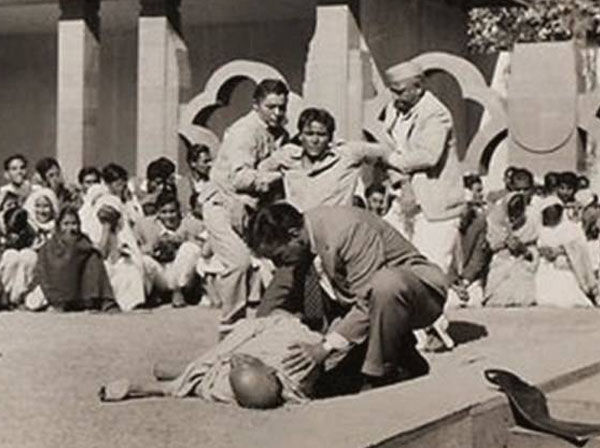
Bapu’s murder was not a solitary event. It was part of a large and long running conspiracy. Since late ’46 protests were staged during Bapu’s evening prayers. As soon as Aayats from the Quran were recited, the prayers would be disrupted by protestors. As time went by the protests became more and more aggressive and angry. The attempt was to show as if refugees from Punjab driven out of their homes by Muslim mobs were responding angrily to Gandhi’s recitation of Ayats from the Quran. The anger amongst the refugees was mounting and they might attack and harm Gandhi in an angry out burst. On a visit to Delhi, both Nathurm and Apte participated in a particularly angry and threatening protest at Bapu’s prayer meeting held at his camp in the compound of the Valmiki Temple, in the Bhangi Colony in Delhi. The protestors first shouted slogans disrupting the prayers, then they rushed towards Bapu. They were stopped and volunteers escorted Bapu to the room where he was staying, Bapu continued his prayers in his room, the crowd dispersed. On their return to Poona both Nathuram and Apte boasted that they had scared Gandhi and forced him to flee. Both the failed attempt on 20th and then the murder on 30th was planned to take place during the evening prayers. If the attempt on 20th January had succeeded, it would have looked as if finally angered by the recitation of Aayat’s from the Quran a refugee had murdered Bapu. Madanlal Pahwa was a refugee from Punjab, the bomb he exploded was planned to be exploded as soon as the recitation from the Quran began, that day the schedule was disrupted due to the malfunctioning of the public address system and so the murder plan went awry. Such was the detailed plan to murder Bapu.
Please read this also

